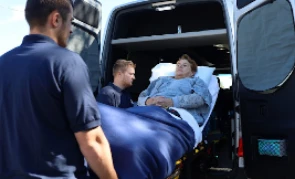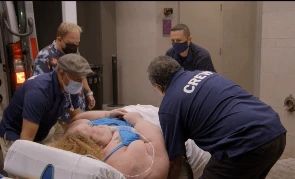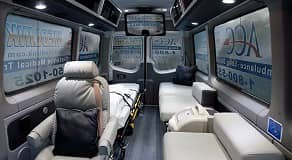In the early days of non-emergency medical transportation (NEMT), employees used paper to document trip scheduling, routing, and payment collection. It was tedious and monotonous. Recently, NEMT companies are shifting from paper-based documentation to electronic records due to the spread of mobile technology and cloud computing.
Operations in NEMT firms are more efficient than it was a decade ago due to the introduction of technology. Here are a few ways technology is improving non-emergency medical transportation:
The earliest in-vehicle technologies were bulky, expensive, and difficult to maintain, causing an increase in the operational costs of a NEMT firm. Fortunately, tablets and smartphones have taken over the tasks these bulky technologies once performed.
NEMT providers used the bulky in-vehicle technologies mentioned earlier to collect and transfer data within their organizations. These days, apps like Parascope help employers and employees monitor ride requests, traffic, billings, and changes made to the collected data. It is easy to access patients’ data in real-time now, but a few decades ago, it was a script straight out of a fiction movie.
Before the advent of transport management software, drivers used maps to track routes. There was no way a person could tell whether there was traffic or a roadblock ahead. Plus, the pick-up and drop-off locations were handwritten. So if “3” resembled “5” on paper, there was a good chance that the driver will end up at the wrong pick-up spot.
Gone are the days when you had to miss your doctor’s appointment because the driver mistakenly wrote 2:15 pm instead of 3:15 pm. You can now get real-time information about traffic or closed roads and make ride requests with less chance for error. Relying on modern technology means you can’t blame the wrong location or timing for your delayed or missed appointment. The only reason why you could be missing or running late for the doctor’s appointments – is that you had other important engagements or took too long to prepare for the trip.
In the United States, about 3.6 million people delay or miss the doctor’s appointment because they don’t have access to transportation. The elderly often encounter many barriers while commuting. Coincidentally, older people are a significant part of the population who miss or delay the doctor’s appointment due to transportation issues. Besides, the United States population is aging, such that by 2030, 1 in 5 Americans will be 65 years or older.
Many people, especially the aged population, patronize non-emergency medical transportation services because NEMT adopts new technologies, allowing people to make ride requests conveniently. In addition, there is no need to fill so much paperwork before getting a ride. As long as the transportation management software continues to have new features, the number of customers and client satisfaction will increase.
Technology improves many aspects of our lives including, transportation. Better days lie ahead in the non-emergency medical transportation sector. As long as technology continues to advance, NEMT will continue to improve. Besides, more people need NEMT, but without technology, accessibility to healthcare services reduces drastically, especially for the elderly.

When choosing a medical transport service provider, you must ensure to choose one that not only focuses on getting you to your destination, but also prioritizes using the safest, most conducive, and most efficient sets of vehicle fleets and equipment to do the job.

ACC Medlink appeared on the TLC television network reality show “1000 LB Sisters” to transport one of the cast members from Ohio to a doctor in Kentucky. Filmed in late 2022, ACC Medlink, four of its employees and the journey they took with Tammy Slaton were featured in episode 6 of season 4, which originally aired on February 21, 2023.

ACC Medlink is proud to announce the addition of a new line of elite medical sprinter vans to our long distance medical transport fleet. This addition will allow ACC Medlink to continue to provide superior service and outstanding care for those in need of medical transport out of state...
